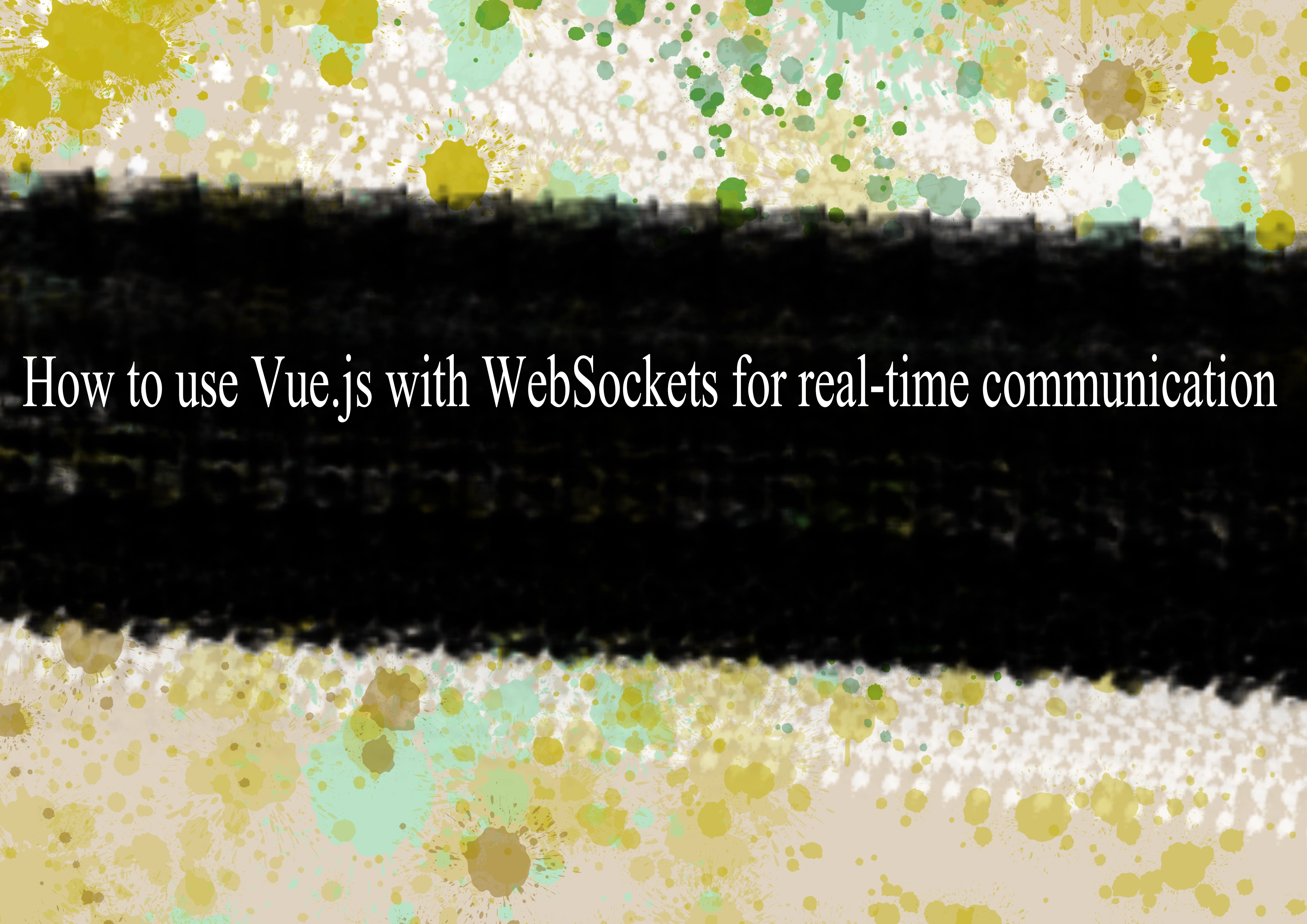How to use Vue.js with WebSockets for real-time communication

Vue.js is a popular JavaScript framework for building user interfaces, and WebSockets provide a way to establish a full-duplex communication channel between a client and a server, enabling real-time communication. Combining Vue.js with WebSockets can be achieved by following these general steps:
Set Up Your Vue.js Project:
- Create a new Vue.js project using Vue CLI or integrate Vue.js into your existing project.
Install a WebSocket Library:
- Choose a WebSocket library for your project. One popular choice is
socket.io. Install it using npm or yarn:bashnpm install socket.io-client # or yarn add socket.io-client
- Choose a WebSocket library for your project. One popular choice is
Create a WebSocket Connection:
- In your Vue.js component, import the WebSocket library and create a connection to the server:javascript// Import the WebSocket library import io from 'socket.io-client'; // Create a WebSocket connection const socket = io('http://your-server-address');
- In your Vue.js component, import the WebSocket library and create a connection to the server:
Handle WebSocket Events:
- Define functions to handle WebSocket events. Common events include
connect,disconnect, and custom events for your application:javascript// Handle connect event socket.on('connect', () => { console.log('Connected to the server'); }); // Handle custom event socket.on('message', (data) => { console.log('Received message:', data); // Update your Vue.js component state or perform other actions }); // Handle disconnect event socket.on('disconnect', () => { console.log('Disconnected from the server'); });
- Define functions to handle WebSocket events. Common events include
Integrate WebSocket Events with Vue Component:
- Inside your Vue component, use the lifecycle hooks to establish and close the WebSocket connection:javascriptexport default { mounted() { // Connect to WebSocket when the component is mounted this.$socket = io('http://your-server-address'); this.$socket.on('connect', () => { console.log('Connected to the server'); }); }, beforeDestroy() { // Disconnect from WebSocket when the component is destroyed if (this.$socket) { this.$socket.disconnect(); } }, };
- Inside your Vue component, use the lifecycle hooks to establish and close the WebSocket connection:
Send Data to the Server:
- Use the
socket.emitmethod to send data to the server:javascript// Send a message to the server socket.emit('sendMessage', { text: 'Hello, server!' });
- Use the
Update the Vue Component State:
- When you receive data from the server, update your Vue component's state to reflect the changes and trigger a re-render:javascript// Handle custom event socket.on('message', (data) => { console.log('Received message:', data); this.messages.push(data); // Assuming you have a "messages" array in your component's data });
- When you receive data from the server, update your Vue component's state to reflect the changes and trigger a re-render:
Handle WebSocket Errors:
- Implement error handling for WebSocket connections:javascript// Handle error event socket.on('error', (error) => { console.error('WebSocket error:', error); });
- Implement error handling for WebSocket connections:
Remember to replace 'http://your-server-address' with the actual address of your WebSocket server. Additionally, tailor the code to fit the specific needs and structure of your Vue.js application.
-
Popular Post
- How to optimize for Google's About This Result feature for local businesses
- How to implement multi-language support in an Express.js application
- How to handle and optimize for changes in mobile search behavior
- How to handle CORS in a Node.js application
- How to use Vue.js with a UI framework (e.g., Vuetify, Element UI)
- How to configure Laravel Telescope for monitoring and profiling API requests
- How to create a command-line tool using the Commander.js library in Node.js
- How to implement code splitting in a React.js application
- How to use the AWS SDK for Node.js to interact with various AWS services
- How to use the Node.js Stream API for efficient data processing
- How to implement a cookie parser middleware in Node.js
- How to implement WebSockets for real-time communication in React
-
Latest Post
- How to implement a dynamic form with dynamic field styling based on user input in Next.js
- How to create a custom hook for handling user interactions with the browser's device motion in Next.js
- How to create a custom hook for handling user interactions with the browser's battery status in Next.js
- How to implement a dynamic form with dynamic field visibility based on user input in Next.js
- How to implement a dynamic form with real-time collaboration features in Next.js
- How to create a custom hook for handling user interactions with the browser's media devices in Next.js
- How to use the useSWRInfinite hook for paginating data with a custom loading indicator in Next.js
- How to create a custom hook for handling user interactions with the browser's network status in Next.js
- How to create a custom hook for handling user interactions with the browser's location in Next.js
- How to implement a dynamic form with multi-language support in Next.js
- How to create a custom hook for handling user interactions with the browser's ambient light sensor in Next.js
- How to use the useHover hook for creating interactive image zoom effects in Next.js